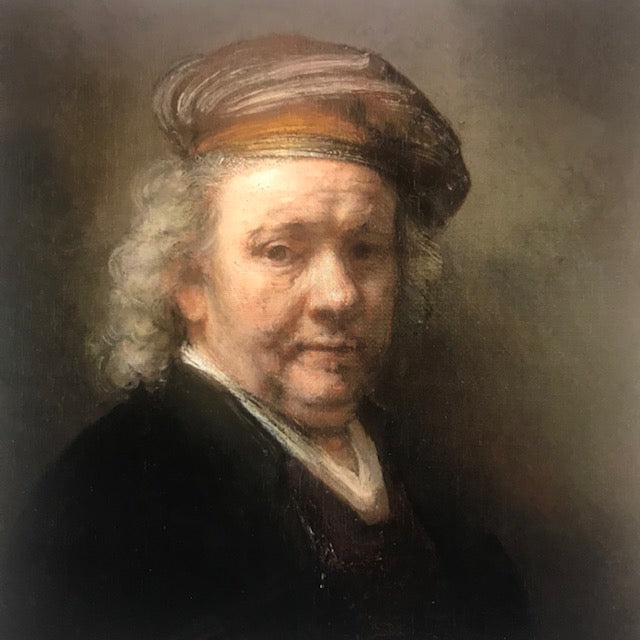
Rembrandt's Likely Last Self Portrait
Room 17, Mauritshuis, The Hague.
The Netherlands, but for a moment, you may feel you don't belong on Earth.
Except you do.
The painter stuns but also reminds you.
One of eighty self-portraits Rembrandt painted, but only three he did the last year of his life, probably the very last (dated 1669, he's then 63), the masterpiece reveals a man tried and tested. Anybody who's suffered setbacks of any kind gets the message.
Look at the eyes.
Bankrupt, Rembrandt has had to sell his art collection. Turns out, he's not the only one who has had to relinquish precious belongings. Before World War II, this Rembrandt belonged to a Jewish German couple, Ernest and Ellen Rathenau, and was on permanent loan to the Rijksmuseum. The Rathenaus had to flee from Nazi Germany to the Netherlands and then the UK and the US. Hitler looted the art.
The painting itself is a bit of a survivor. Discovered in a salt mine in Austria in 1945, it was one of 6,500 (along with Vermeer's Astronomer) Adolf Hitler's staff had accumulated; the mass murderer intended to exhibit them all at the Führer Museum in Linz, his birthplace, but the museum never materialized.
Three lessons shall have relevance for not only artists but also professionals, entrepreneurs, and innovators:
- However painful life may be at times, failure is not an option, and Rembrandt keeps going. You don't have to know the master has lost his first wife, his lover, his first son and first and second daughter (all three at a very young age), his art collection, his very own house (auctioned to pay off debt), his last son (shortly before his own death), to figure the man's seen his share of horrors and miseries. The painting says it all. Genius screams it. But the last year of his life, he was still painting and rocking the art world.
- Retirement is not for all. Rembrandt continued painting and never retired. As Louis Armstrong said, "Musicians don't retire; they stop when there's no more music in them."
- Volume matters. To quote Thomas Edison, "The real measure of success is the number of experiments that can be crowded into 24 hours." Adam Grant, in Originals: how non-conformists move the world, agrees: "…The most prolific people not only have the highest originality; they also generate their most original output during the periods in which they produce the largest volume … It's widely assumed that there's a tradeoff between quantity and quality—if you want to do better work, you have to do less of it—but that turns out to be false. When it comes to idea generation, quantity is the most predictable path to quality. Original thinkers … will come up with many ideas that are strange mutations, dead ends, and utter failures. The cost is worthwhile because they also generate a large pool of ideas—especially novel ideas." He also writes, "When the London Philharmonic Orchestra chose the 50 greatest pieces of classical music, the list included six pieces by Mozart, five by Beethoven, and three by Bach. To generate a handful of masterworks, Mozart composed more than 600 pieces before his death at thirty-five, Beethoven produced 650 in his lifetime, and Bach wrote over a thousand… The more pieces a composer produces in a given five-year window, the greater the spike in the odds of a hit." Rembrandt painted 300 paintings; only a few aren't masterpieces.
Free Shipping and Returns above $100!
Quick links
Contact us
About us
Art that Stings, Stuns, 4 Fun
